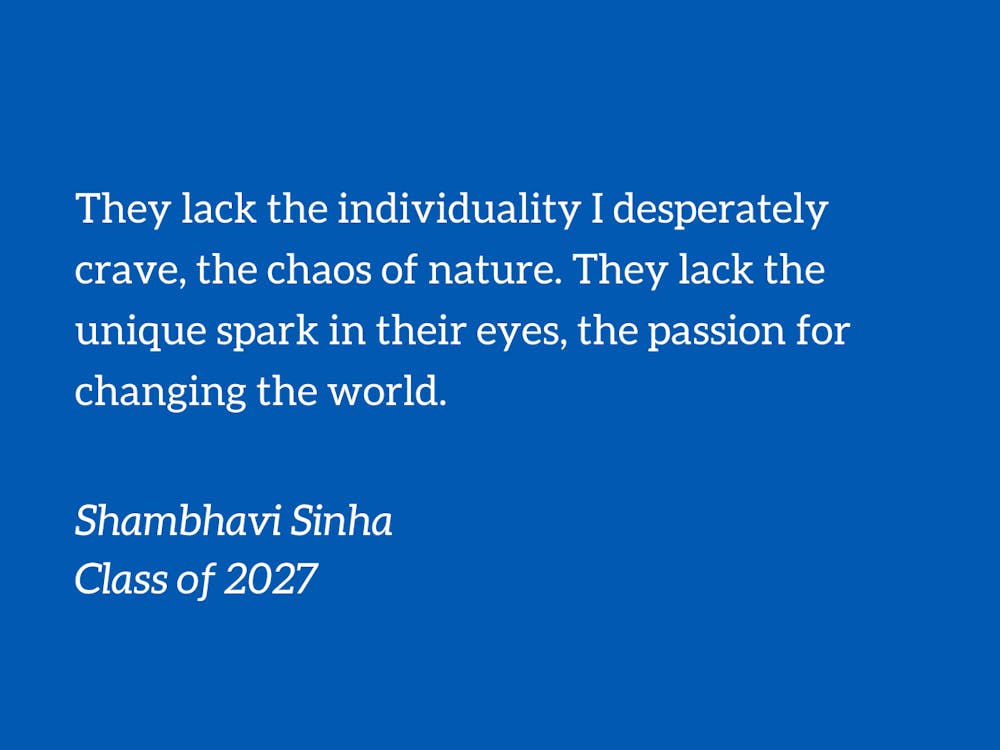As the freshmen run around for orientation week, and summer is nearing its carefree end, Duke prepares all around for the coming academic year. From replacing common room furniture in Edens (it’s the least they can do to remedy that place) to installing HVAC upgrades for Brodie Aquatics, summer has been the time for change. Now, as a sophomore, I cannot confirm how common or uncommon it is, but it is the second — maybe third — time I’ve witnessed the grass be replaced since my time here.
I would not deny that I was surprised by the lush lawns the first time I came to Duke. They’re vibrant, and in conjunction with the Georgian style architecture distinct to the East and the towering trees well cared for on the quad, it seemed like the opening shot of some light academia coming-of-age film. Enveloped by the stirring sunshine, the chirping birds, and the buzzing bees, I often found myself possessed by the spirit of Keats. But not all that is beautiful lasts.
As the semester went on and we all buried ourselves in coursework — the glorious free time from orientation week felt like trying to recall a dream from last night — the atmosphere grew tense every time the pre-meds had another organic chemistry midterm, and East felt it too. By November, the grass on East was a depressing, dead shade of ochre. Even by the end of spring, hints of the yellow remained. Perhaps it is my (sub)tropical origins speaking, but it was not an overstatement to say that it felt depressing relative to its former glory.
So then, color me surprised when I return to East — during the summer — to find the grass green again. Suddenly, it was as if I had become my freshman-year self. Nothing had changed. The lawns were the same. I was the same. Or was I even ever there? No trace of me existed. The lawn in front of the Classroom Building I had laid on for hours did not exist. Nor did the lawn where I watched "Spiderman: Into The Spiderverse." None of that remained. The lawns I once loved, now made me feel sick: Because what I loved was never real.
All the lawns I know have been “natural”: Even if they were planted with intention, they grew at their pace, by their own choice. There were no carpets of perfectly uniform, green grass; they seemed to suggest more the idea of a lawn than a lawn itself. There was inherent randomness.
I do not know why what I thought was superficially beautiful could give me so much grief, but I still despise these lawns. They lack the individuality I desperately crave, the chaos of nature. They lack the unique spark in their eyes, the passion for changing the world. They seem to become dimmer after the rain, rather than brighter. They somehow all want to work in investment banks. For some reason, they need sprinklers on for them during severe thunderstorms.
In ways more than one, the lawns are a reflection of us. Everyone brings their fresh selves in the fall, but it is us falling apart by the end of the year. We all pretend. We all perform. Put on masks of pretend intellect, and engage in superficial conversations. Some even refuse to engage with others at depth, and others don’t even try to know themselves. And if these lawns all are the same, what does that say about who we all are? Are we all the same despite our unique quirks and distinct backgrounds? Are we all just transported here, watered and made to seem appealing, and we eventually leave (statistically, to a consulting firm)?
We all are brought here, from our unique backgrounds and perspectives into East Campus. Bright-eyed, fresh-faced barely adults who want to change the world. But as we are planted, we all start resembling each other. Conversations start becoming less about impact-making, and more about profit-making. We all are diverse on paper — on the surface — but these unique quirks and perspectives converge. We conform to what performances are expected of us and mold ourselves to the mold of superficial intellect that recruiters crave. And this inauthenticity of thought, of engagement, translates and pervades our lives here: No matter how hard we try to retain the memories from our time here, or try to leave our mark on the ground, nothing will remain.
Why? Because every year, they strip them. Who knows where they end up? Maybe in some Gothic-style composting unit. Maybe in some boutique investment bank. We will forget each other despite the countless ties that connect us. Despite the fifteen gigabytes worth of pictures on the cloud, none of these memories will follow us. No sophomore, junior or senior notices the difference: After all, the grass is basically the same, right? No freshman recognizes the history in the grass, because there is none. We tried to make our marks, as will they. And eventually, someone will come strip them and delude the next class into trying to make their marks. We will keep making our marks on these lawns, only for them to fade to obscurity.
Shambhavi Sinha is a Trinity sophomore. Her pieces typically run on alternate Mondays.
Get The Chronicle straight to your inbox
Sign up for our weekly newsletter. Cancel at any time.

